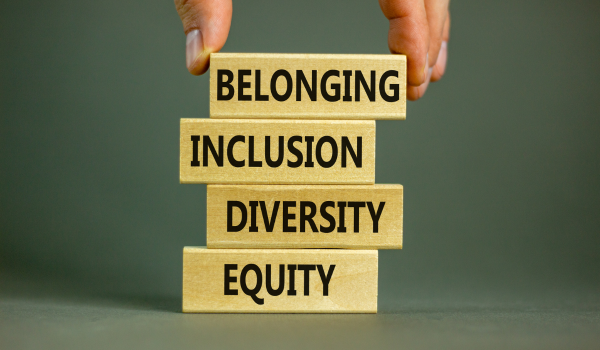Imagine an office environment where you’re working long hours. If you’re a woman, you may notice that the room feels uncomfortably cold. This isn’t just a personal experience, it's a byproduct of a historical bias. The temperature standards for central heating were established in the 1960s, based on the metabolic rates of men. For many women, this means spending their workdays in an environment that’s a few degrees too cold.
This seemingly minor inconvenience is just one example of how decisions made based on male-centric data affect women daily. From the size of the phone you hold to the car you drive, many products are designed for the "average" male body. Phones are built for larger hands, and car crash dummies are typically modeled after male proportions. This oversight leaves women more vulnerable in car accidents, as their bodies experience different strains than men’s.
Challenging the One-Size-Fits-All Approach
This one-size-fits-all approach, where male data shapes products, policies, and healthcare, has severe consequences for women. While progress toward gender equality has been made, the gender data gap remains an enormous barrier to true equity. It is essential to acknowledge these biases and take steps to ensure that future innovations in product design and healthcare prioritize diversity, equity, and inclusion.
Steps to bridge the gender data gap and foster a more inclusive office culture
It is essential to implement targeted strategies in recruitment, retention, and daily workplace practices. Here are key pointers for making your office more inclusive for women:
1. Redesign Workspaces with Women in Mind
- Temperature Settings: Recognize that women often feel colder due to the male-dominated temperature standards. Adjust office temperatures to accommodate a broader range of comfort levels, or provide individual temperature control options where possible.
- Ergonomic Office Furniture: Consider diverse body types when designing or choosing furniture, including desks, chairs, and workstations. Ensure that office equipment is adjustable to meet the needs of all employees, not just the "average" male.
2. Gender-Sensitive Recruitment Practices
- Gender-Neutral Job Descriptions: Ensure that job ads avoid masculine-coded language that may deter female applicants. Use phrases that focus on skills and competencies rather than aggressive traits.
- Blind Recruitment: Implement blind recruitment processes that remove gender identifiers from CVs and applications to minimize unconscious bias during the initial screening phase.
- Diverse Interview Panels: Ensure gender diversity in interview panels to create a more welcoming environment and reduce unconscious bias in hiring decisions.
3. Support Career Growth and Leadership Opportunities for Women
- Mentorship and Sponsorship Programs: Establish mentorship programs that connect women with senior leaders who can provide guidance, opportunities, and visibility. Sponsorship programs can also ensure women are considered for promotions and key projects.
- Leadership Development: Offer leadership development programs that focus on empowering women to build the skills needed to advance in their careers. Ensure women have access to leadership training and networking opportunities.
4. Inclusive Policies for Work-Life Balance
- Flexible Working Hours: Provide flexibility in working hours to accommodate women who may have caregiving responsibilities. Allow for remote work options and encourage a results-oriented work culture rather than a time-at-desk approach.
- Parental Leave Equality: Promote gender-neutral parental leave policies, ensuring that both men and women can take adequate time off for caregiving without career repercussions. Encourage men to take full advantage of paternity leave to reduce the caregiving burden on women.
5. Close the Gender Pay Gap
- Transparent Pay Structures: Promote pay transparency by regularly conducting audits to ensure gender pay parity. Make pay bands visible, and provide clear criteria for promotions and raises to prevent hidden biases.
- Equitable Compensation Packages: Offer benefits that cater to women’s needs, such as comprehensive healthcare, childcare support, and wellness programs. These can help women stay engaged in the workforce long-term.
6. Foster an Inclusive Culture with DEI Training
- Gender Bias Training: Provide regular diversity, equity, and inclusion (DEI) training to all employees to recognize and address unconscious biases. Ensure that the training covers gender-specific challenges and how men and women experience the workplace differently.
- Promote Allyship: Encourage male employees to actively support gender equality by becoming allies. Allies can speak up against biases, mentor female colleagues, and ensure their contributions are recognized and valued.
7. Improve Retention Through Women-Centered Support Programs
- Returnship Programs: Offer return-to-work programs for women re-entering the workforce after extended career breaks, providing training, mentorship, and support as they transition back.
- Wellness and Mental Health Support: Women often face unique stressors in the workplace. Offer mental health support and wellness programs that acknowledge and address issues such as gender bias, work-life balance challenges, and caregiving responsibilities.
This blog was inspired by a video from Akil Wingate.
Discover bite-sized lessons on 5mins.ai, where we explore crucial topics designed to foster greater diversity, equity, and inclusion. To explore more bite-sized lessons like the one this blog was inspired by, click on the button below to get a free trial of 5Mins.ai.
.png)



